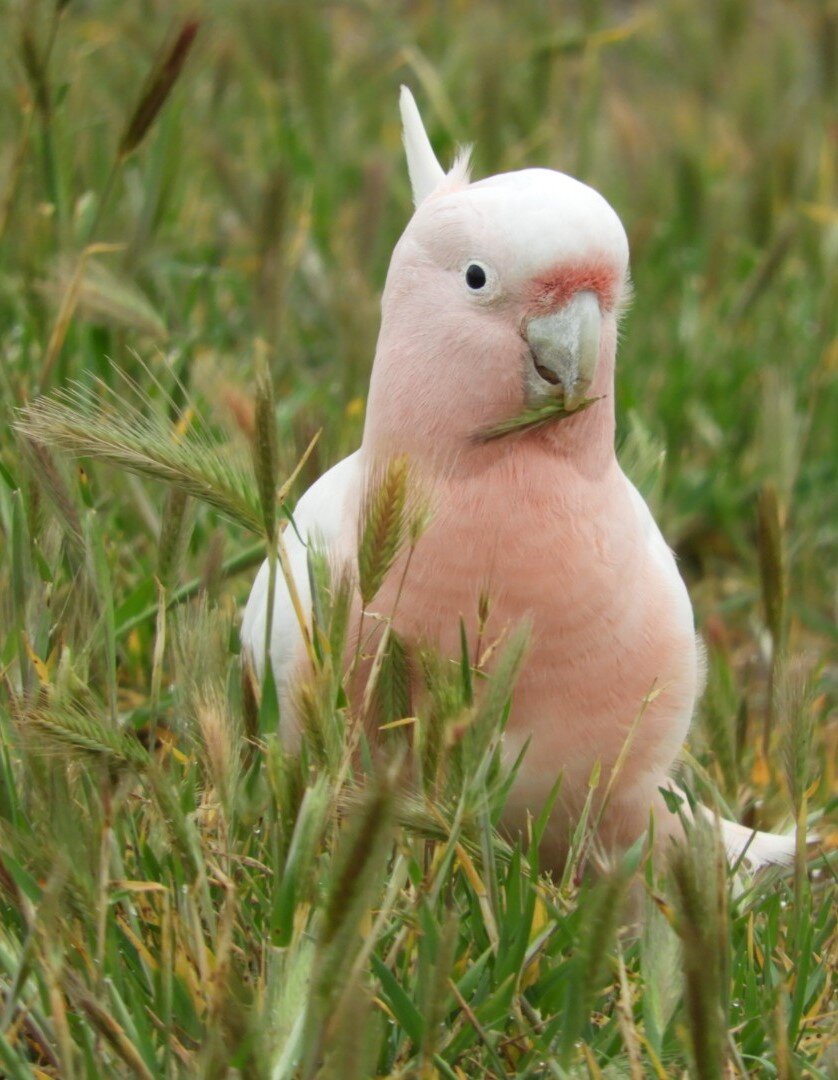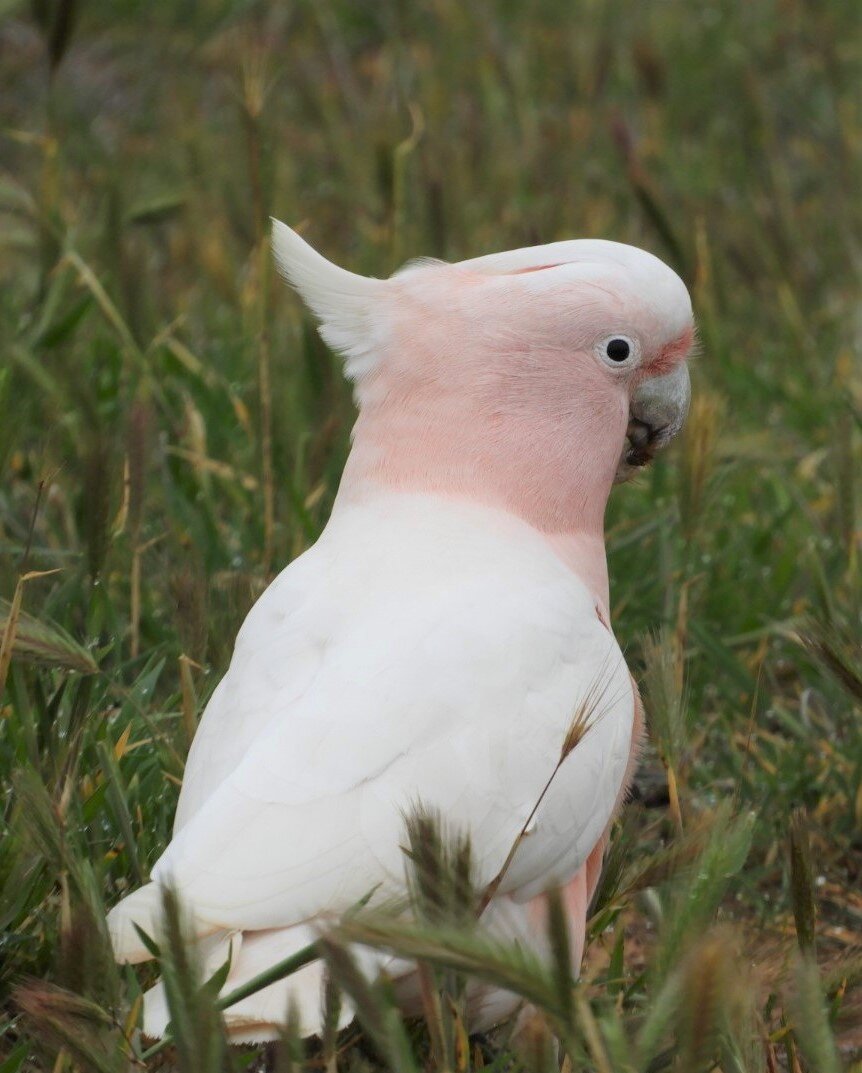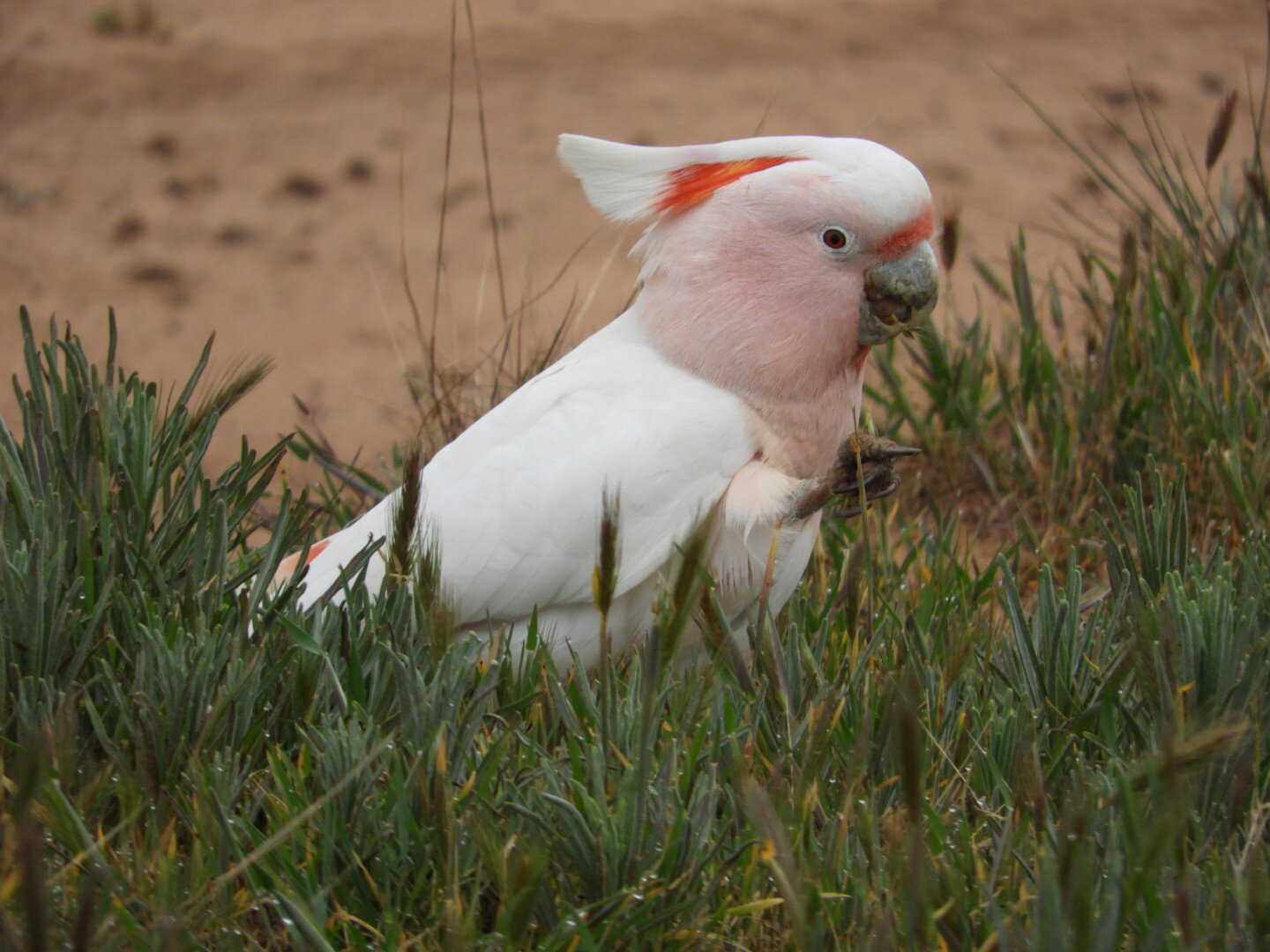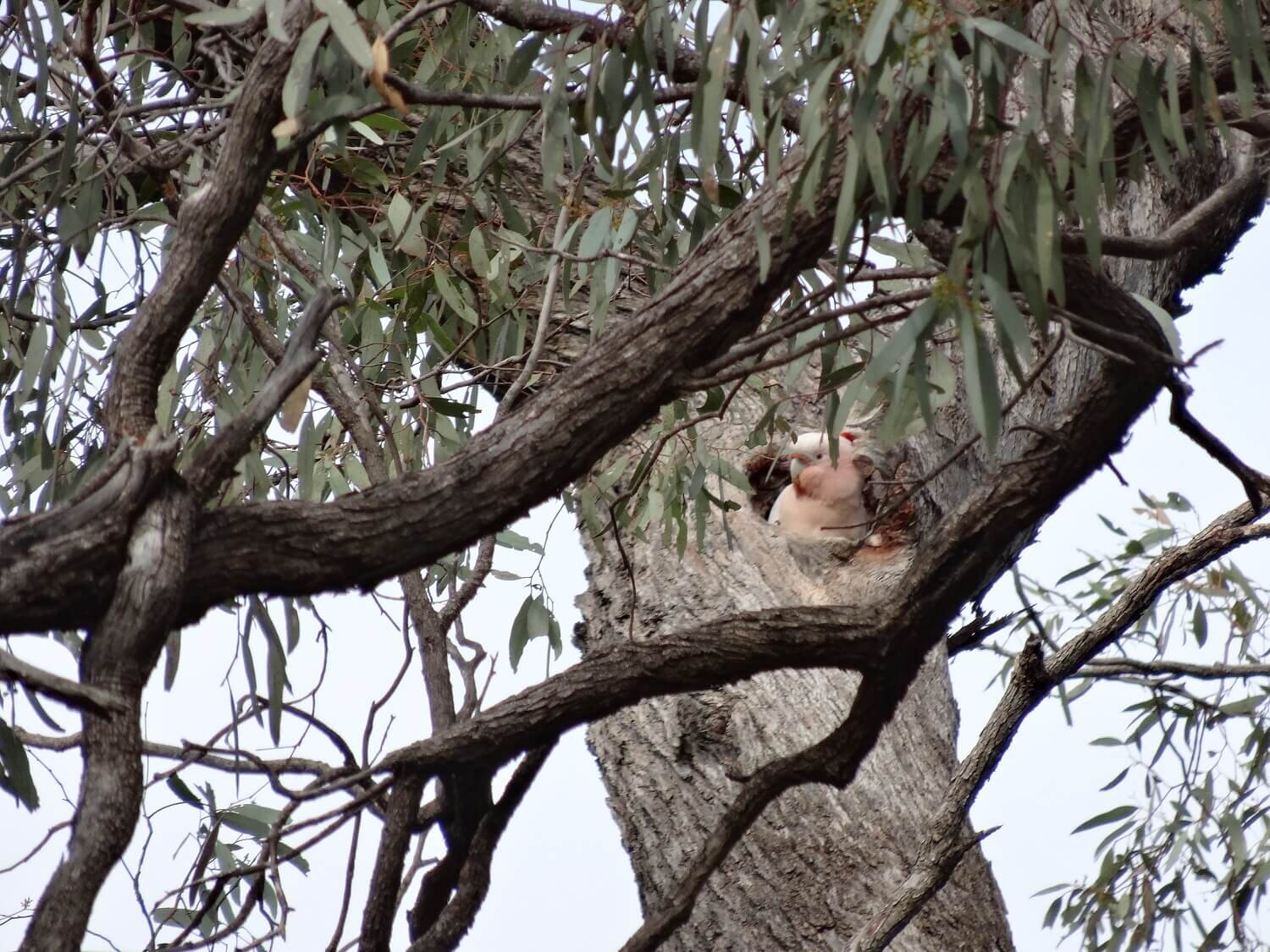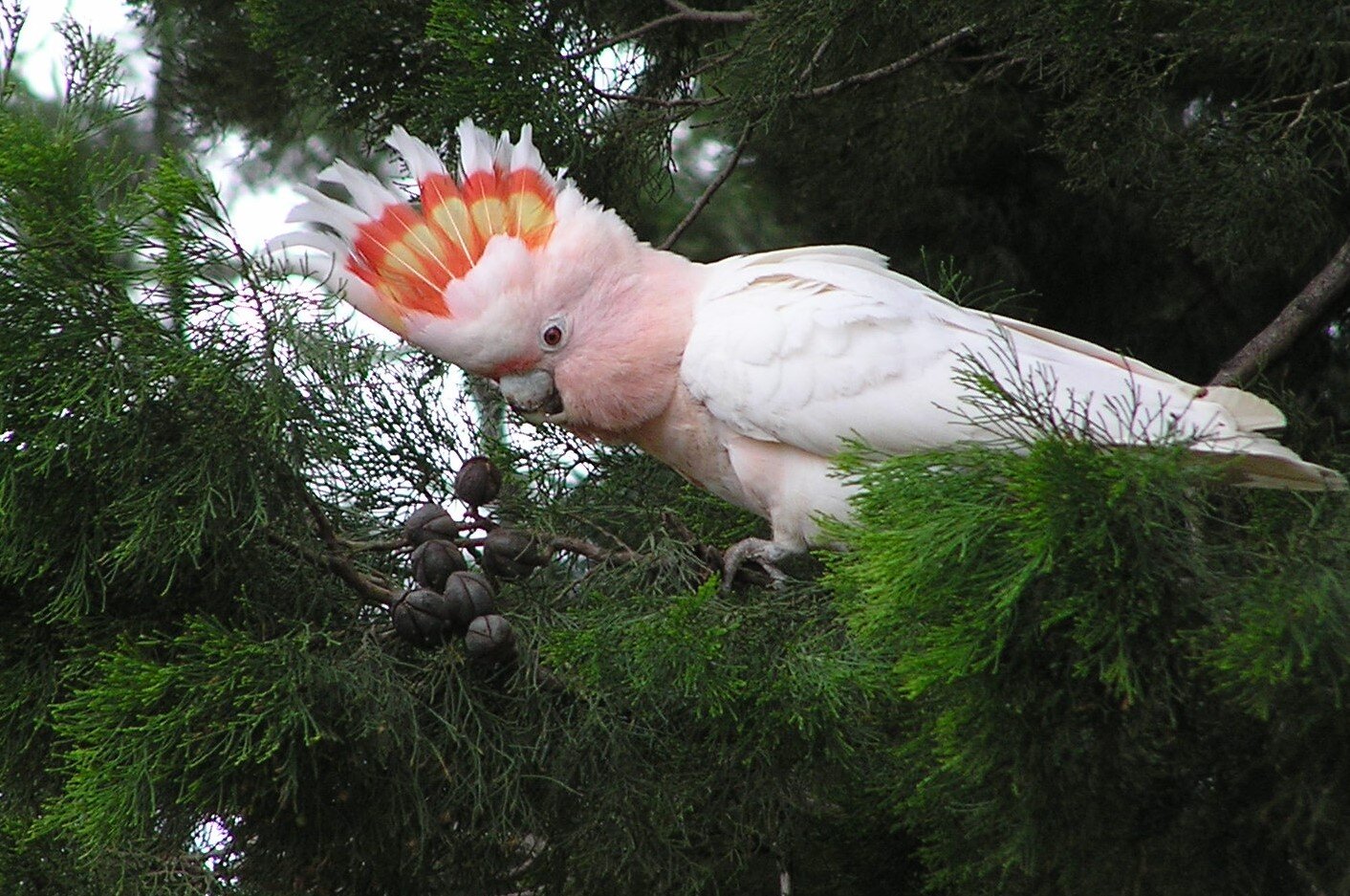Nesting hollows for Pink Cockatoos
It's hard to be annoyed about the Barley Grass invading our native grassland. This pair of Pink Cockatoos obviously don't mind eating the milky seed heads.
Pink Cockatoos need nesting hollows!
Pink Cockatoos are listed as critically endangered in Victoria. They need old trees with hollows large enough for nesting in. And that’s the problem. Pairs of Pink Cockatoos prefer their hollows in Native Pine (Callitris gracilis) trees that are about 170 years old. At this age the trees are susceptible to wind-throw and have often accumulated dropped branches around the base, making them vulnerable to bushfires. There aren’t enough young trees ready to take their place.
The most wonderful but sobering article was published back in 2018 on the plight of the Pinkies at Wyperfeld. Victor Hurley, armed with a chainsaw, is on a lifetime mission to save Pink Cockatoos by carving new hollows and remodelling damaged hollows. It’s slow, tedious work but essential.
In 2013, a pair nested in the Blackbox in our Raakajlim creek line. It was very exciting but a major branch broke off and they haven’t been back since. We’re always hopeful they will choose one of our other hollows.
Pink Cockatoos - change the name!
Oh, you might know these birds as Major Mitchell Cockatoos. We prefer the name Pink Cockatoo and avoid reference to Mitchell, an early explorer with, we think, dubious credentials. I encourage you to have a look at this website mapping colonial massacres to understand why. The Mt Dispersion massacre site is just near our house. BirdLife Australia tells me it is one of a long list of species currently being considered for a name change.
2023 update! Birdlife Australia is now using Pink Cockatoo in official correspondence. Read this great article here
First published 18 August 2020
See also those blog post from June 2021 on food for Pink Cockatoos

